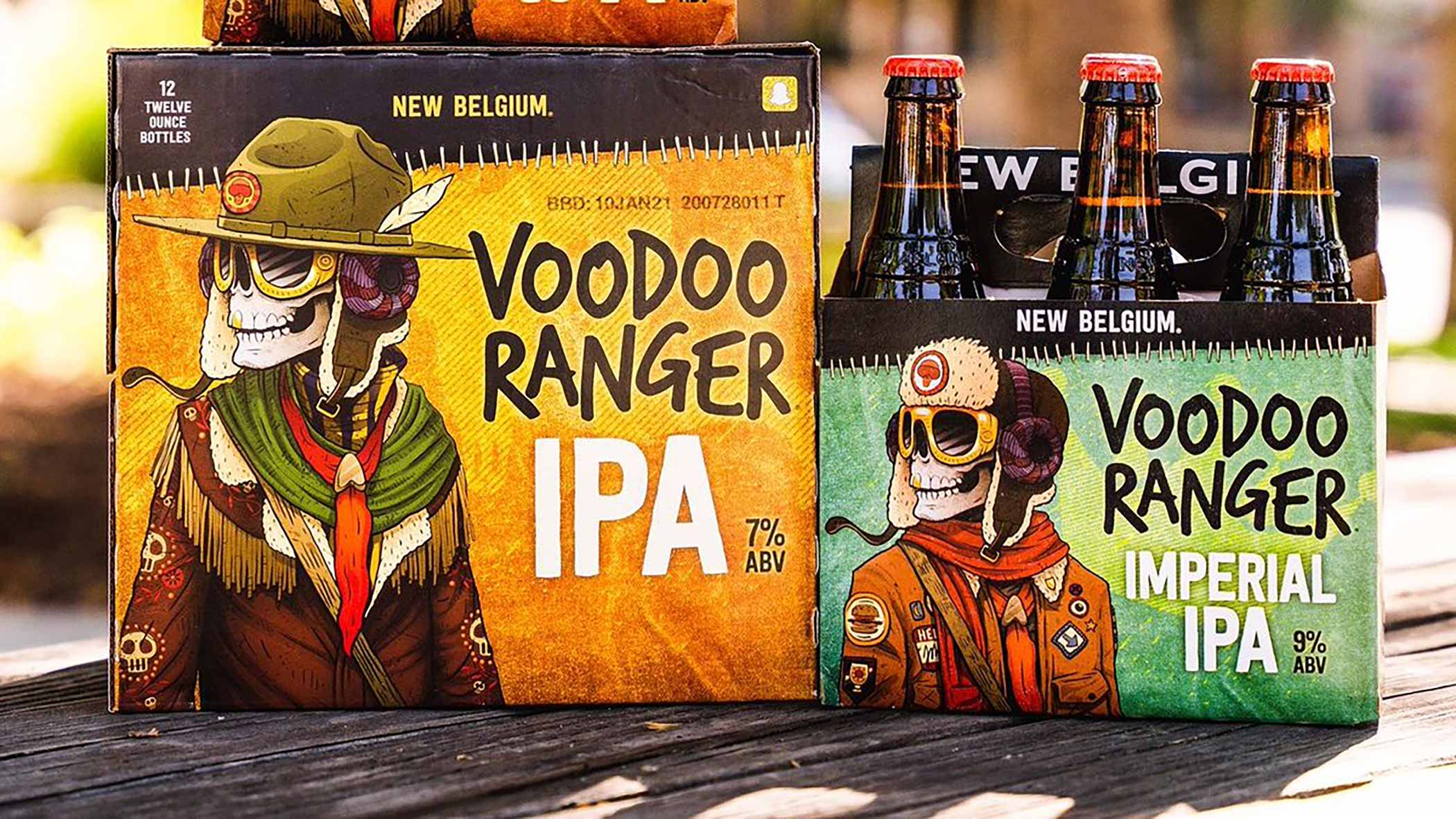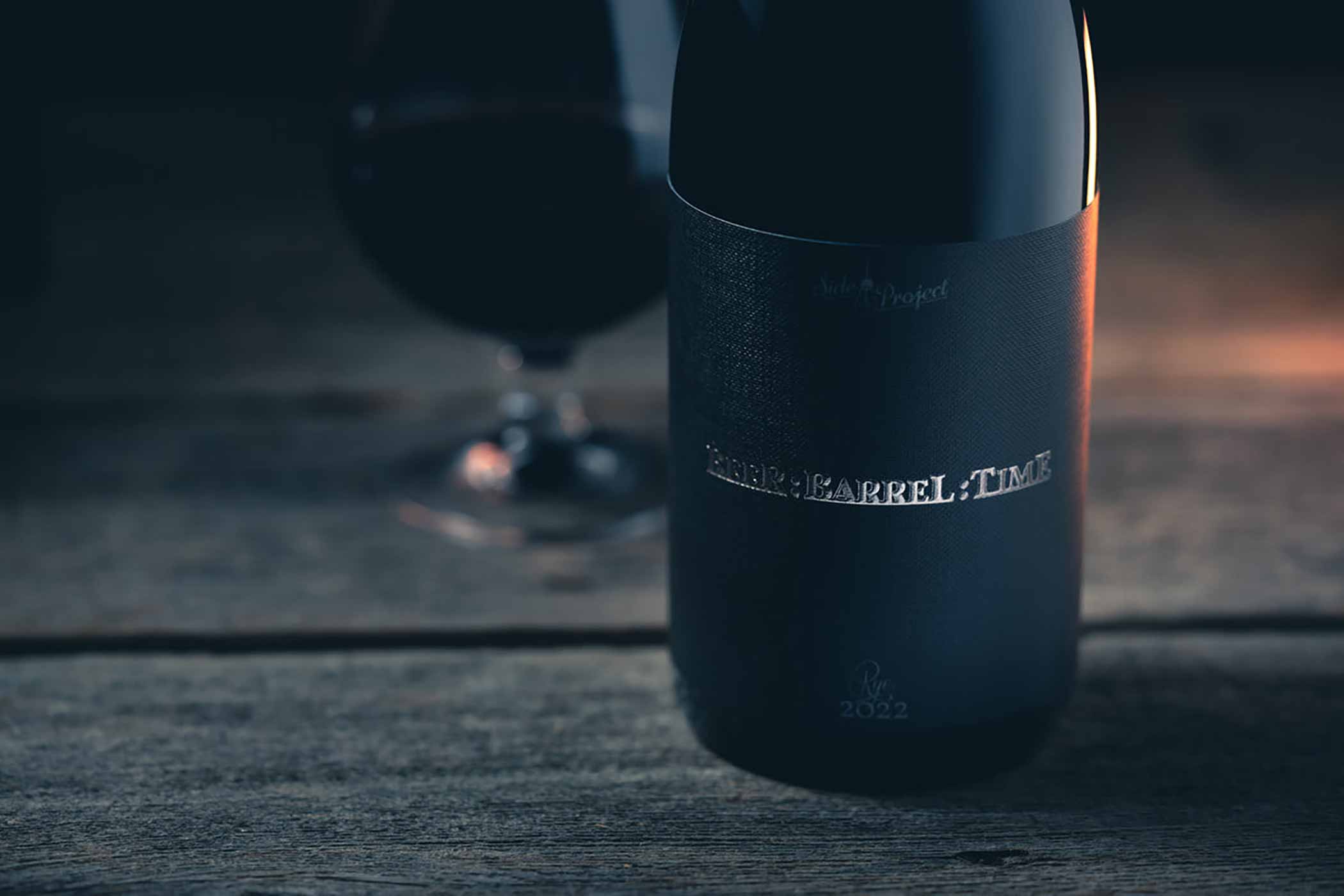Shop
The Best Selling IPA in the Country Is Sold Mostly in Glass: Why Glass Is the Best Packaging for Beer
Looking into our crystal glass ball...
This is a paid, sponsored post presented by our friends at O-I Glass.
For the last decade or so, cans have been the king of craft beer packaging with more folks looking for an easy way to take their beer on the go. In fact, according to the Can Manufacturers Institute, beverage can production across all segments jumped six percent in the United States to more than 100 billion cans in 2021.
But let’s not forget that there was a time when glass bottles in all shapes and sizes dominated the beer market. And just like 2023 might actually be the year of the lager and pale ales seem to be making a resurgence, we know that trends are cyclical.
Glass could be poised for a comeback. Or maybe the better question is: Did it ever really go away?
Last year, the United Nations General Assembly approved a resolution declaring 2022 the International Year of Glass (IYOG) to recognize the heritage and influence of this type of packaging. Along with the environmental benefits.
Glass beer bottles are made of four simple, natural ingredients—silica sand, limestone, soda ash, and recycled glass. It’s 100% recyclable, over and over, and can go from curbside recycling back to the shelves as a new bottle in as little as thirty days. Glass’ pure ingredients mean it protects the beer inside. It tastes the way the brewery intended—no metallic aftertaste.
For some breweries, glass has always played an important role and will continue to do so far into the future.
For instance, at Left Hand Brewing Company in Longmont, CO, where their Milk Stout Nitro is their number one selling SKU in 6-pack bottles.
Or at New Belgium Brewery in Fort Collins, CO, where Voodoo Ranger Imperial IPA, the number one IPA in America, sells best in 6-packs of 12oz glass bottles, not aluminum cans (according to Nielsen scan data year to date, week ending 10/8/22).
What’s the reason for these popular beers selling in glass?
Well, here’s a potentially hot take: Glass might just be the best packaging for beer.
Glass Gives a Premium Feel You Just Can’t Get in Cans
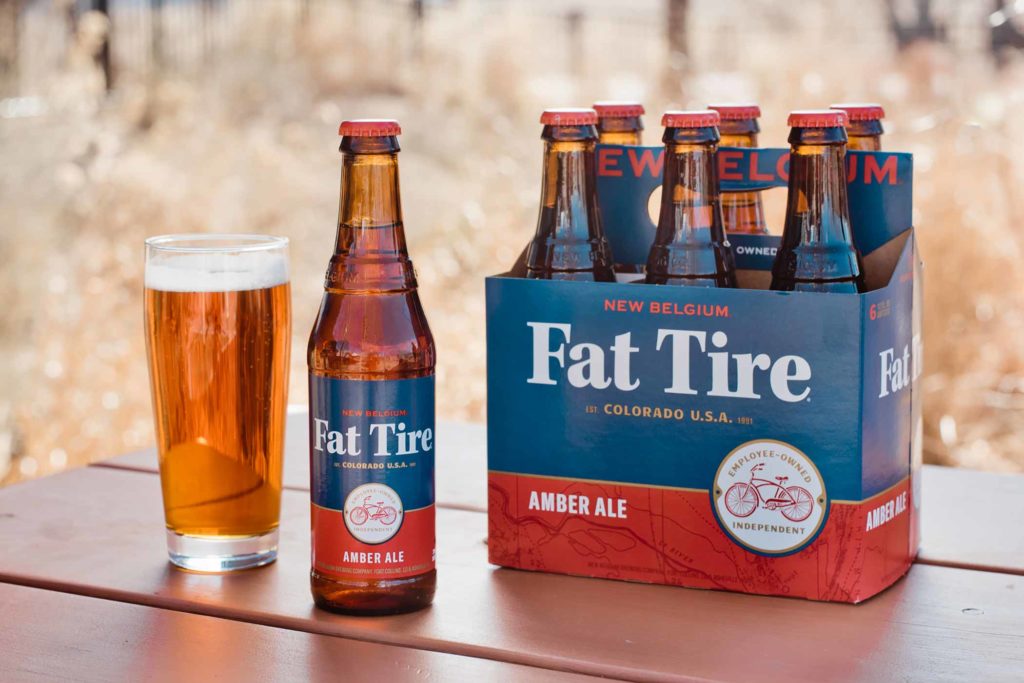
New Belgium’s standard 12oz bottles are a custom mold, printing a ring around the neck that says New Belgium | Photography courtesy of New Belgium
By far and away, New Belgium Senior Brand Manager of Innovation Andrew Emerton says that he prefers glass because it gives certain New Belgium beers a premium feel that you just can’t achieve with aluminum cans.
“There is a certain consumer buying behavior that is part of our overall consumer culture, which is that consumers usually like to touch things,” says Emerton. “If you see a shirt in a store you really like, you’ll probably try to touch it… Using bottles is the premium opportunity you have that comes with textural finishes.”
Think about it this way: Do you see high-end spirits sold in cans?
Most often not.
Instead, you find top-shelf scotch, whiskey, vodka, tequila, etc., presented in these intricately designed bottles with interesting structures and surfaces.
While spirits have better margins to pay for these over-the-top bottles, beer simply can’t compete. Instead, a simple glass bottle with a flourish here or there can make all the difference.
“In the beer world…there aren’t a whole lot of opportunities to add those premium elements, but you can do that with a bottle,” says Emerton, suggesting fun embossed or custom molded bottles that are unique to your brewery. “It’s a really great way to extend your identity on a shelf or own an identity on a shelf that is unique that you just can’t do with cans.”
At New Belgium, they’ve been using a custom bottle for all their 12oz bottles since about the ‘90s, Emerton estimates. With a ring around the neck that says New Belgium, these bottles are distinctly unique to the brewery. “It’s ours; we own the mold, so nobody else can use it,” says Emerton. “It’s a unique identifying piece… It automatically kicks you into this premium queue.”
Currently, in 12oz glass bottles New Belgium offers everything from classics like Fat Tire, Trippel, Honey Orange Trippel, and more to newcomers like the Voodoo Ranger series.
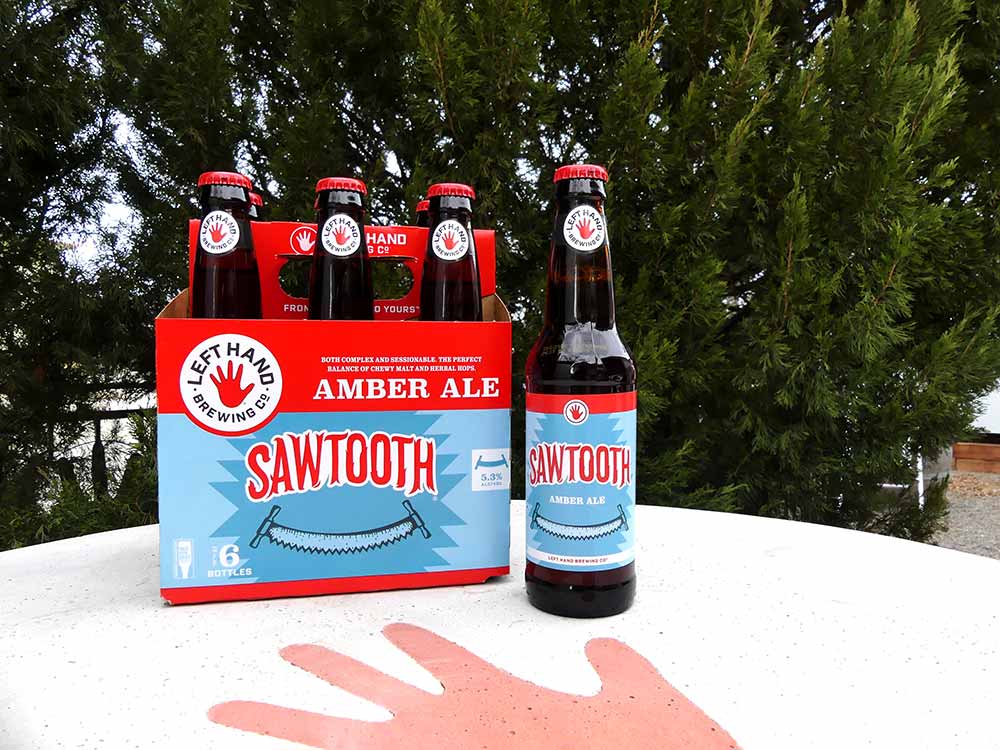
Left Hand Brewing Co’s original flagship amber ale, Sawtooth, is only sold exclusively in bottles | Photography courtesy of Left Hand Brewing Company
At Left Hand, head brewer Gary Glass says the brewery’s original flagship Sawtooth amber ale is only sold in bottles and the uber-popular Milk Stout Nitro sells better in bottles. That’s what people want and “it’s hard to argue with what the customer wants,” says Glass.
For Sawtooth specifically, Glass calls that a “heritage craft brand,” so it fits well in a bottle. “A can is very utilitarian,” he says. “But bottles are just a little classier.”
Especially when they go bigger. Way bigger.
Glass Grows in Size and Revenue
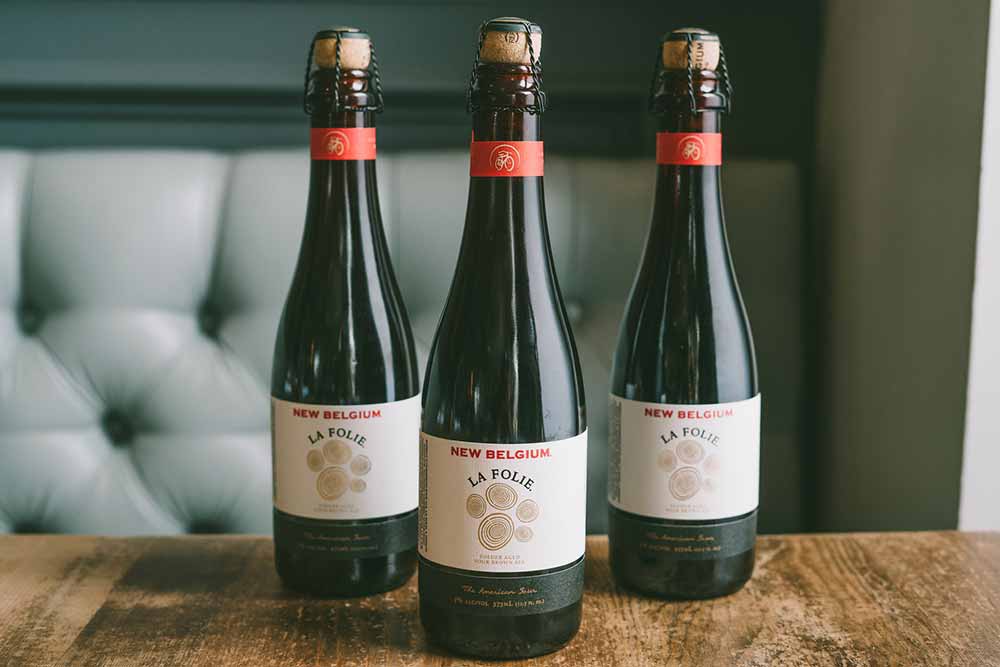
Customers are willing to pay more for New Belgium La Folie cork-and-cage bottles | Photography courtesy of New Belgium
With glass bottles, you have a wide variety of sizes at your fingertips. And while 20oz bombers aren’t as common these days, Emerton says that larger 375mL cork-and-cage bottles are very much a part of New Belgium’s successful agenda.
Currently, very special, high-quality sours such as New Belgium’s La Folie and Le Terroir find their way into this cork-and-cage format.
“It pays a lot more respect to the beer going in there,” he says. These are very nuanced, very premium beers that have taken an immense amount of time and attention to make.
Putting delicate beers like La Folie in a 375mL bottle also means New Belgium can charge upwards of $11.99 for one…and people are willing to make that investment.
Think of it this way: “You don’t go to a Michelin star restaurant to have food served on a plastic plate,” says Emerton. “When you present something in that elevated way, it feels special, it feels like the price associated with it.”
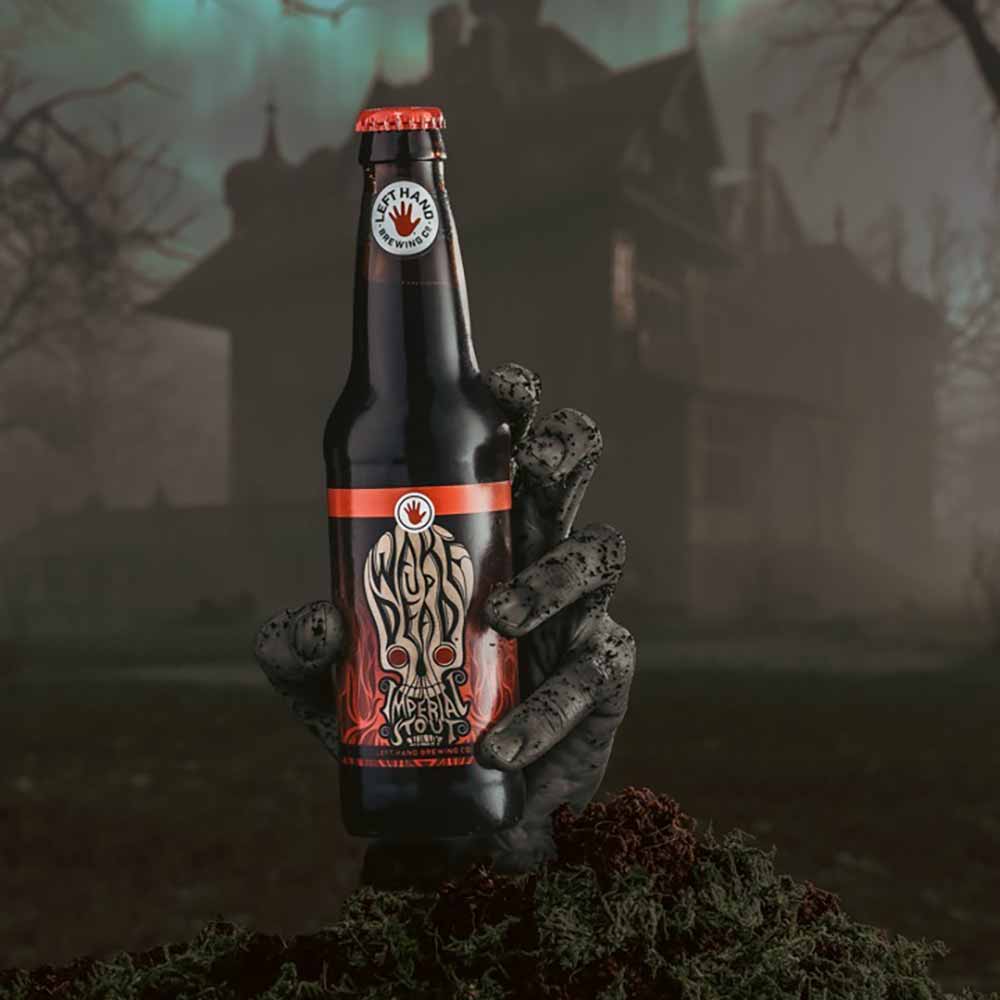
Photography courtesy of @lefthandbrewing
Plus, Glass points out, for some of these styles, such as Left Hand’s Barrel-Aged Wake Up Dead imperial stout, a glass bottle lends itself better to aging. “In that case, the beer can be aged for quite a while, many years, and continue to improve,” he says. “With cans, you do not want to age beer because can liners have a limited life span.”
Big format and cork-and-cage bottles are just a couple examples of the creative avenues breweries can go down with glass packaging.
Get the Creative Juices Flowing with Glass
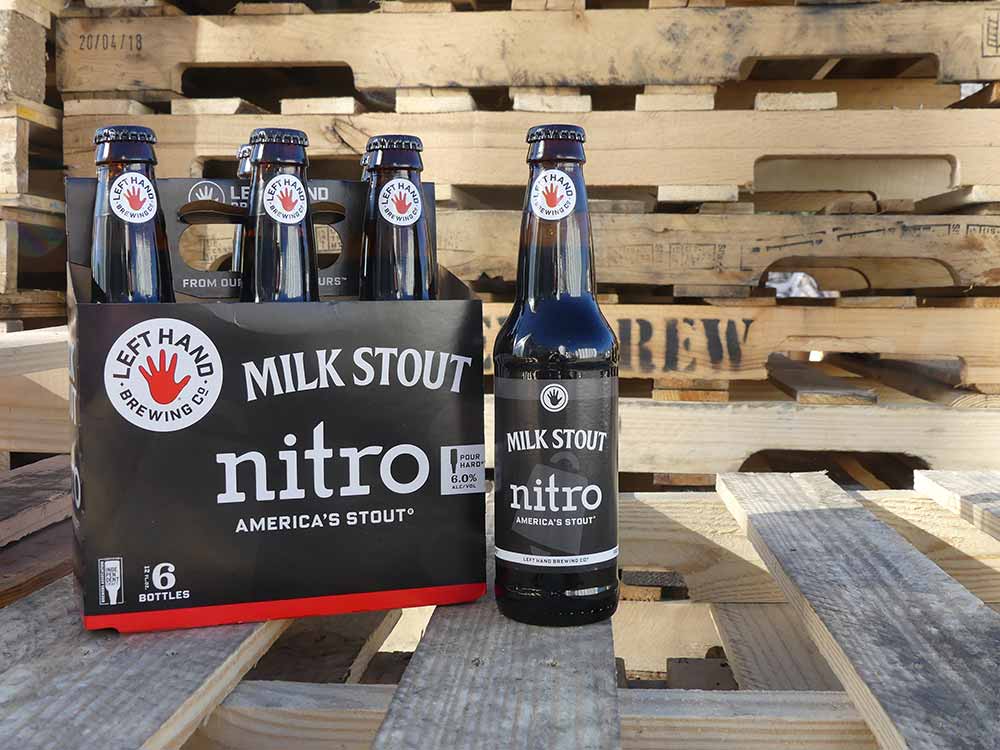
Photography courtesy of Left Hand Brewing Company
“You have all these fun avenues to explore with bottles that you just don’t get with cans,” says Emerton.
For instance, you can mess around with cap colors or put a surprise code or saying under the cap. It’s just what Emerton calls “another interaction point.”
You could add an additional neck label to a bottle. According to Emerton, New Belgium has actually conducted internal studies comparing the performance of bottles with neck labels and without.
“We have pretty good evidence, when it’s shoulder and above on the bottle on the shelf, that the neck label helps it stand out,” says Emerton.
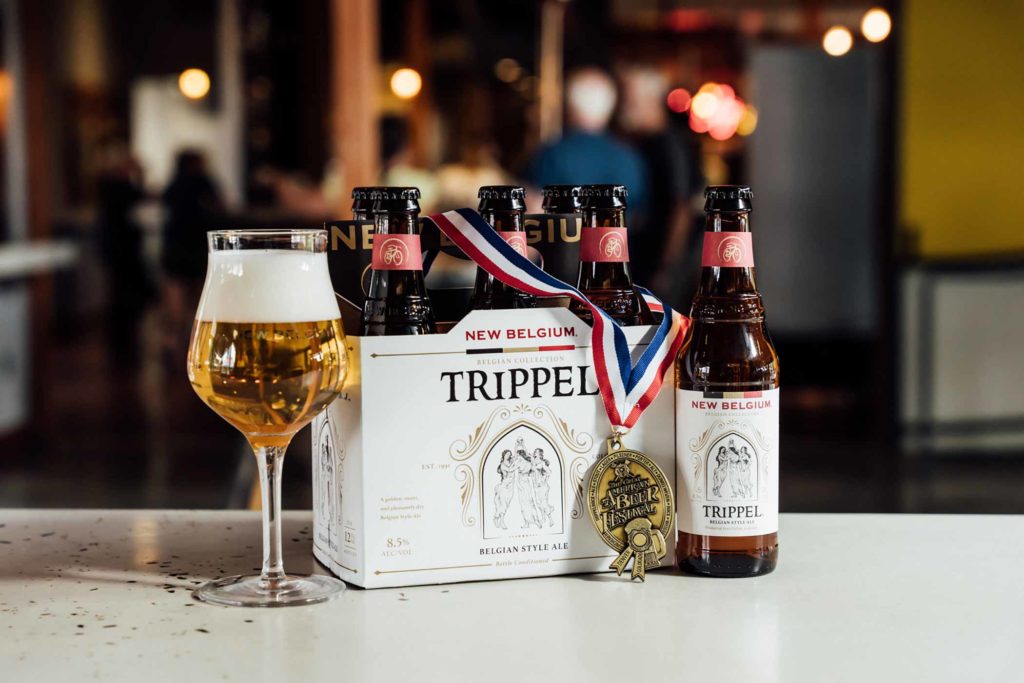
Photography courtesy of New Belgium
For instance, with New Belgium’s Trippel. The brewery conducted studies on adding a red neck label and charging a dollar more for the bottle.
“The idea is that you’re signaling to consumers that you’re going up in price,” says Emerton.
The experiment has seemed to work. Emerton says that, since they made those changes to Trippel in 2017, sales have increased thirty percent. “You can attribute that increase in year-over-year growth to other things, but Belgian-style tripels aren’t exactly the thing in craft beer right now and that brand is twenty-plus years old, so to see an old legacy brand like that find footing again in year-over-year growth is really exciting,” says Emerton. “A lot of that came from the transformation we did on packaging premiumization to the existing bottle and increasing the price with it.”
Additionally, glass bottles offer more opportunities when it comes to printing. Emerton calls printing on aluminum cans still “a very analog process” in the United States. You need to create printing plates and mix the paint to match the exact color you’re going for, which can limit your options. Plus printing on metal is just tough by nature.
With the bottle label side, on the other hand, you can hit any color spectrum and gradient tone you want, according to Emerton.
Gets the Party Started
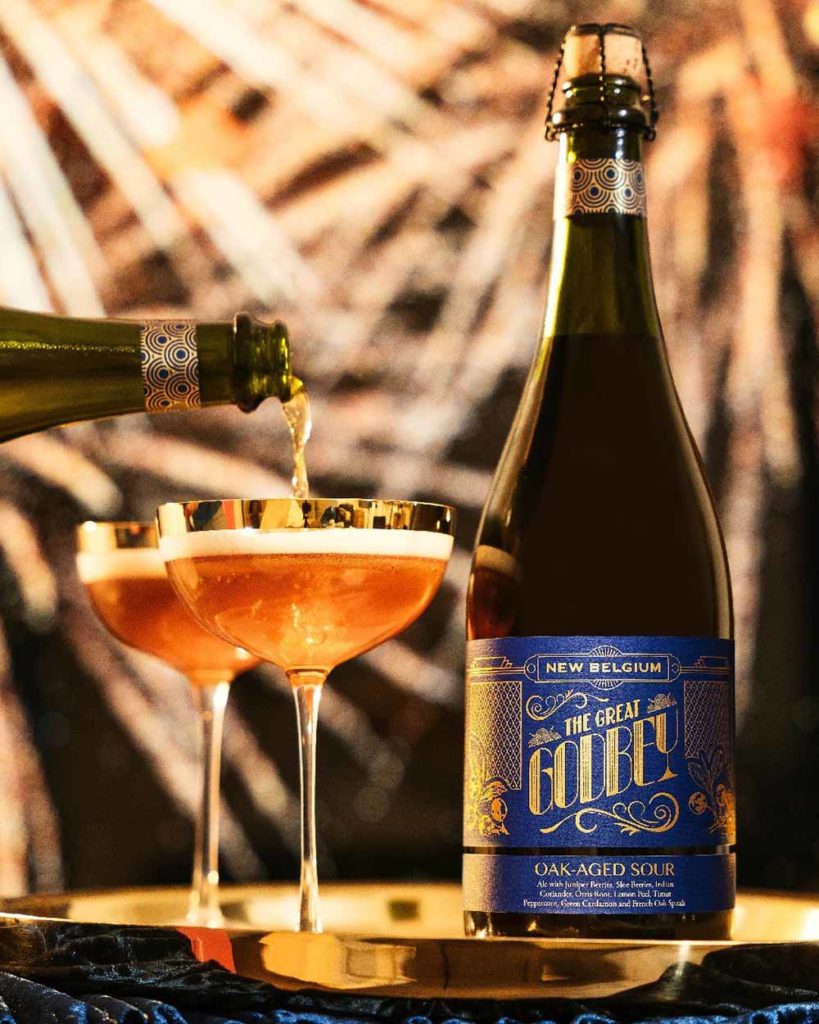
Photography courtesy of @newbelgium | New Belgium
Imagine this: You’re heading to your annual holiday cookie swap, white elephant, or even Friendsgiving, what do you bring?
Most likely a bottle of some type of beverage right? Whether it’s scotch, wine, cider, or even beer.
“If I’m invited to a dinner party…I’m more inclined to go for something in bottles than cans,” says Glass.
And Emerton agrees. “For whatever reason, it’s hard to put your finger on it, but bottles in the family gathering scenario tend to sell better,” says Emerton. “There is an attraction to bottles over cans as still this inherent premium, old-school thing… [When] the holidays come around we want to trade up to something, and in that jump-ball scenario, the bottle tends to win a little more if it’s a beer that’s nice, shareable, or a celebratory-type beer.”
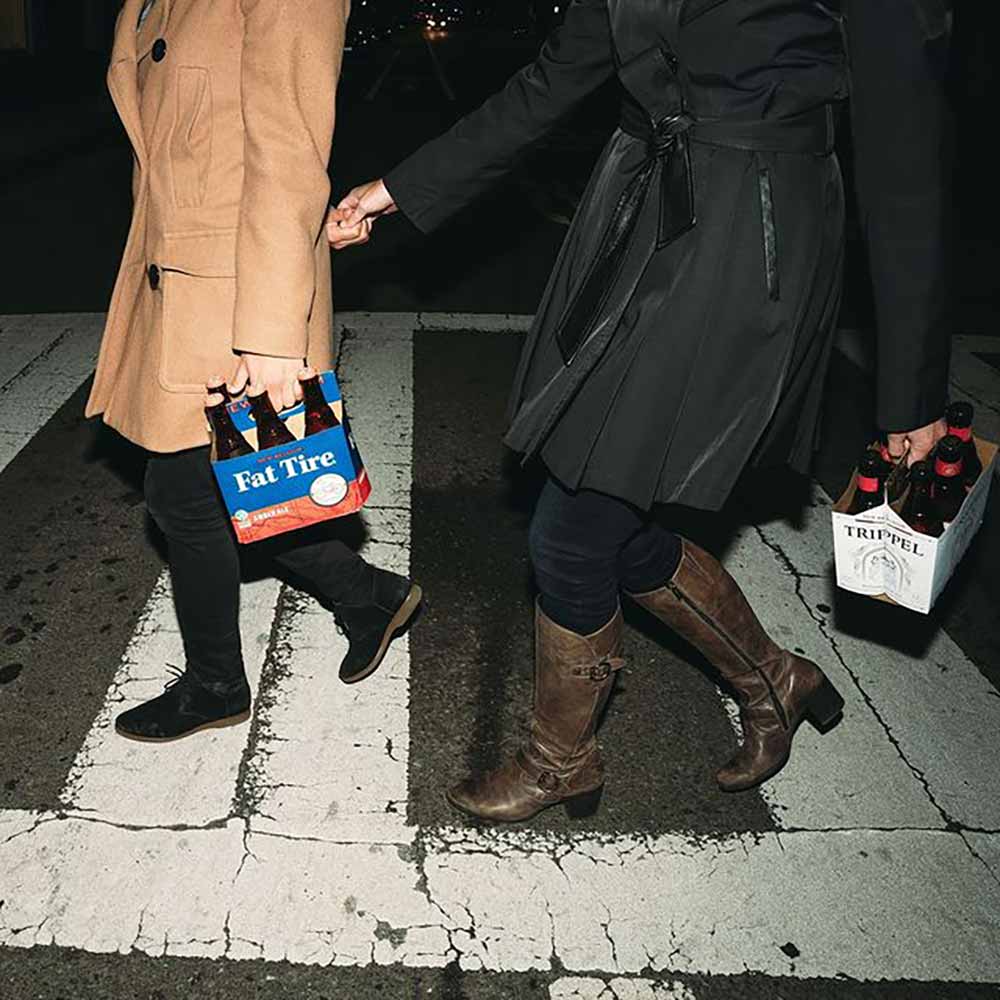
Photography courtesy of @newbelgium | New Belgium
Emerton says that during the holiday season in November and December, bottle sales increase across the board at New Belgium. These two months are the number one season for their bottle variety pack sales and the number one quarter of sales for Trippel.
According to Nielsen scan data comparing the months of October, November, and December in 2021 vs. the previous three months of July, August, and September, Trippel averages a twelve percent increase in sales volume. Similarly Fat Tire glass SKUs in both 6-pack and 12-pack bottles see a seven percent lift in sales volume. And New Belgium’s Variety Pack bottles experienced a fourteen percent jump in sales volume during this time.
During a time of gift giving and holiday cheer, often the busiest sales time of the year, people tend to reach for bottles.
Gets to Market Quicker
Even if being premium doesn’t sound better, think about using glass from a business perspective.
Logistically, it’s quicker to use glass bottles than cans when it comes to printing labels.
“The turnaround time to get labels printed on glass versus cans is dramatically different,” says Emerton. “We count on at least three months for cans to get printed and go through the proofing process, but with labels [on bottles] it’s as little as two weeks.”
Specifically, during the COVID-19 pandemic a majority of breweries either increased their packaging in cans or turned to it for the first time, putting an incredible strain on the supply chain.
“For breweries, it is somewhat of a liability to be exclusively in cans,” says Glass. “Certainly at Left Hand it has been a big advantage the last couple years because we’ve been able to use both cans and bottles. Even when we couldn’t get access to cans, we were able to continue production and not take a significant hit.”
And currently, as the U.S. economy continues to struggle with inflation and rising prices of raw materials, Glass says he expects glass bottles to gain some interest “just because aluminum and the access for cans has been so volatile.”
But will glass once again overtake cans?
Looking Into the Crystal Ball: What Is the Future for Glass Bottles in Craft Beer?
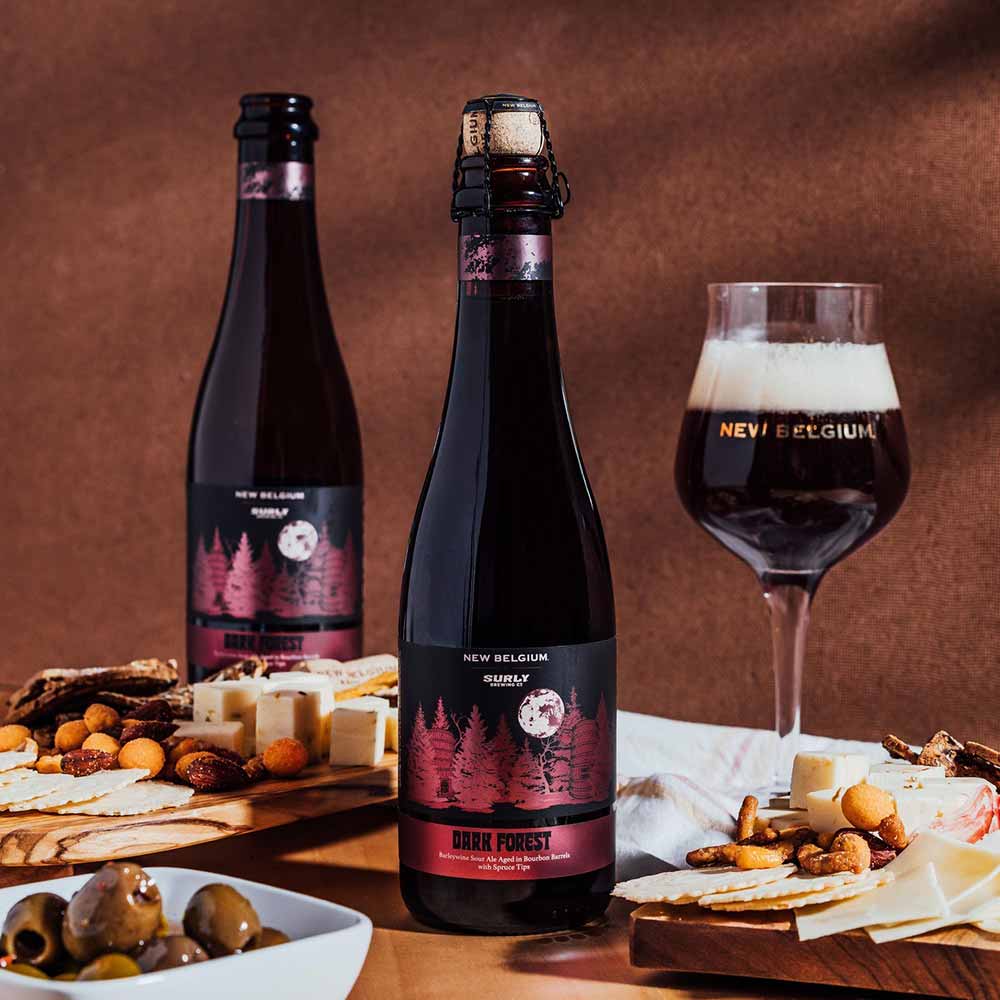
Photography courtesy of @newbelgium | New Belgium
Probably not.
Overall, Emerton doesn’t think that glass will overtake aluminum cans again, but he hopes that more breweries give that packaging format some serious consideration.
“In a dream world I’d love to see the craft industry return to a nudge towards premiumization itself,” says Emerton. “It’s on this trajectory towards this caricature world and constant irreverence; premiumness could be a nice addition back into craft.”
And bottles are the perfect primer to premium. “On the ritual side of things, it feels like there is something more to own there with bottles that would benefit breweries to help them stand out on a shelf,” says Emerton. Whether that’s through a mold all your own, a cool color on the cap, or even little easter eggs on the labels. There are so many fun and interactive components to labels on glass bottles that you can entertain.
Emerton encourages breweries to consider glass even if it’s just for one or two releases here and there. “For some of these newer breweries that have found success in the past five or six years with 16oz 4-pack sticker [can] labels, what a fun pivot to come out with your own ownable bottle as some sort of unique identifier to make it just for yourself,” says Emerton.
Glass just gives you a little glitter if you will, a little sparkle, and a little zhuzh. And in today’s crowded craft beer market, that can make all the difference.
“Glass should just be a part of the conversation again for the majority of craft,” says Emerton. “Even now after 9,000 breweries…there are still ways to own a piece of the industry.”
And if that doesn’t convince you, let us remind you: The number one selling IPA in the entire country, Voodoo Ranger Imperial IPA, is sold mostly in glass, not aluminum cans.
Beer for thought.
If we look into our crystal glass ball, we see glass in our future.

